What’s the Best Way to Cut PVC Pipes – Which Tool to Use? – Reviews & Buyer’s Guide
-
- Last updated:
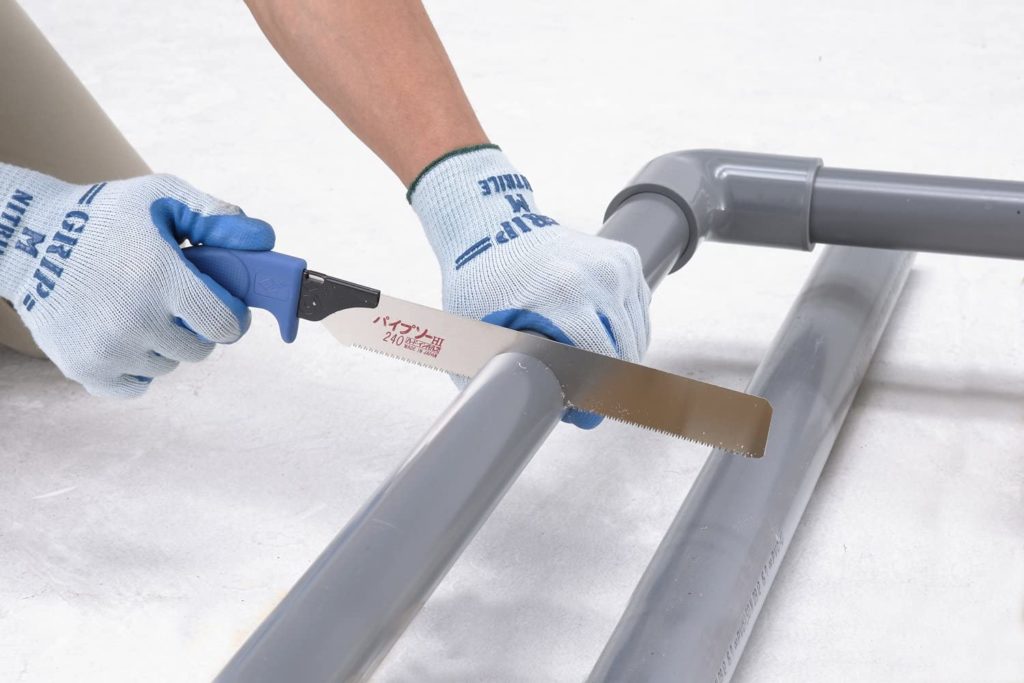

Eventually, professionals and even homeowners will find themselves needing to cut PVC pipe. Whether you need to trim a single pipe or cut a large handful, there are many ways to do this. Some of these options are better for certain situations than others. Which one works best for you depends mainly on what you’re doing.
In this article, we’re going to discuss many of the different ways to cut PVC pipes.

The 7 Best Tools for Cutting PVC Pipe
There are quite a few tools that are made for cutting PVC pipes. Many of these have their pros and cons, so the optimal choice will depend on the specific aspects of your project. We’ll look at some of the top tools so that you can decide which one is perfect for your situation.
1. Copper Tubing Cutters
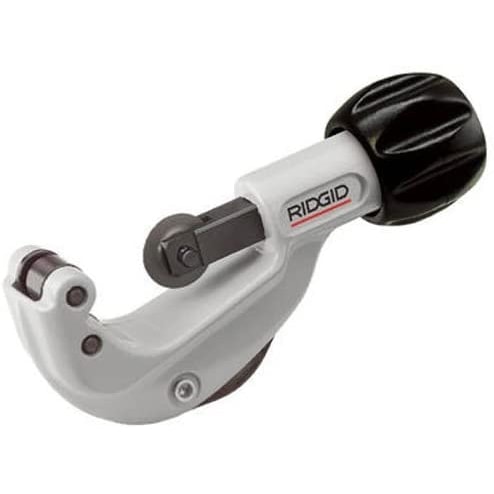
These tools are specialized and come in all shapes and sizes. Some are very small and only suitable for tiny pipes, while others are substantial and can handle larger pipes.
No matter their size, these tools all work in about the same way.
They grip the pipe between the rollers and the sharp cutting wheel. Then, the cutter rotates around the pipe, gradually cutting deeper and deeper. Copper tubing cutters can work on a variety of different materials, despite their name. They can work on copper tubing (of course) as well as PVC plastic.
However, using the cutters to cut anything that isn’t copper usually wears down the cutting blade. Over time, this can be a significant problem. You should change the cutting wheel regularly.
In most cases, you will need multiple sizes of this tool. Most people will have a smaller pair for smaller pipes and a larger pair for larger pipes.
Auto cutters also exist, but they are more expensive and finicky. They automatically tighten down with each rotation of the cutter.
2. PVC Tubing Cutters
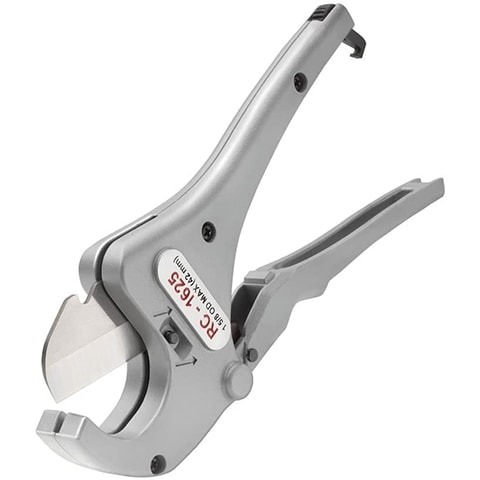
As the name suggests, PVC tubing cutters are made to cut PVC pipes. They are basically like a pair of shrub pruners. As you open and close the handle, the tool cuts through more pipe. Eventually, this leads to the whole pipe being severed.
These tools can usually only cut through smaller pipes. Different tools are available, but they typically aren’t huge. They are generally very affordable, especially the smaller options. The most common size is 1¼ inch, but there are many options available out there. You do need a decent amount of hand strength to successfully use this tool, however.
3. ABS Saw

An ABS saw is specifically designed to cut through ABS pipe. This sort of pipe is very brittle, so you cannot usually use standard pipe cutter tools to cut it. Instead, you need a specialized tool like this one.
You can also use an ABS saw to cut through PVC pipe, though it doesn’t do this quite as effectively.
This saw will leave burrs and extra material around the inside and outside of the pipe. This can interfere with solvent gluing and cut up your hands. This takes a bit longer than other cutting methods.
Check out our favorite pipe saw here.
4. Cast Iron Snap Cutters
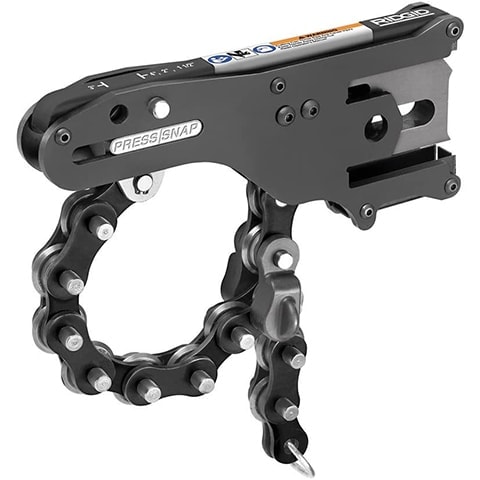
This tool may look complicated and a bit scary. However, using it is pretty straightforward. These cutters are typically large and chain-like. They are made to cut through cast iron, clay, and concrete pipes. But they can also be used for PVC pipes. They may be a bit overkill, though.
The chain on the tool is tightened around the pipe and then continuously tightened until it breaks the pipe in half. This creates a very clean break.
These cutters are usually very heavy. They take a bit to maneuver and are not as easy to use as other options. They also have a pretty steep learning curve. This tool is also quite expensive. Most homeowners will likely avoid them for that reason. You shouldn’t need one for most pipe jobs unless you have concrete or cast-iron pipes in your home.
5. Steel Pipe Cutters
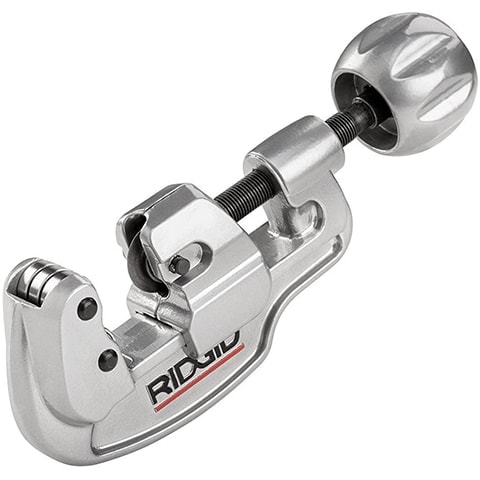
Steel pipe cutters are designed to cut through iron and steel pipes. These sorts of pipes are nearly impossible to cut any other way. If you want to work with them, you’ll likely have to pick up one of these tools.
They look very similar to copper cutters, except that their cutting wheel is thicker and more robust. This allows them to cut through thicker and substantial pipes, like those made out of iron. You move the cutters around the pipe, tightening down as you go. Eventually, this cuts the pipe in half.
You can also use them to cut through PVC pipes. However, they are a bit too powerful for this, which is why they are lower on our list.
These don’t work well in tight areas, as you need room to rotate the cutters. In tight areas, you may need to fall back to other tools.
6. CPVC and PEX Cutters

These cutters are scissor-like tools. They operate in a very similar way to many of the other tools on this list. You squeeze the handle until the pipe breaks. As you might imagine, this tool is only suitable for soft tubing. It will not be able to cut through more challenging pipes, so its uses are minimized.
For soft pipes and smaller projects, this is probably one of the best options you can purchase. It is inexpensive and works rather well. They can cut through PVC pipes with a little bit of force.
Extended use may wear your hands out, though. There are other options for cutting these types of pipes out there, so you usually have many options to choose from.
You can find our favorite tube CPVC cutters here – they are inexpensive and high-quality.
7. Saws
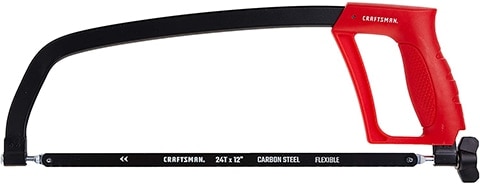
Perhaps the most straightforward way to cut through pipes is to use a saw. A hacksaw can cut through just about any plumbing pipe, including PVC. Plus, many home DIYers will already have one of these in their workshop. You can use them for more than just cutting pipes as well, so you’ll probably get more use out of it than any other tool on this list.
Many different kinds of saws can cut through pipes. A jigsaw can cut through nearly any pipe if it has the right blade, and a reciprocating saw can cut through even huge pipes.
Buyer’s Guide – Choosing the Best Tool for Cutting PVC Pipe
When considering the best PVC pipe cutters for your situation, there are quite a few features you need to keep in mind. We’ll discuss some of these features in this buyer’s guide.
Flexibility
Generally, PVC cutters should be made from high-quality materials that are versatile. Though you may only be cutting PVC pipes with the tool, it is always best if it can cut other materials as well. This prevents you from needing to purchase a completely separate tool if you find yourself needing to cut through a different material.
Luckily, many of these tools can cut through many different materials. They’re your all-around pipe cutters.
Durability
While these tools aren’t particularly expensive, you still don’t want them breaking down in the middle of a job. For this reason, they should be made out of a durable material and well-suited for the job at hand. Lower-quality tools tend to break easily, which is the last thing you want when you’re in the middle of a job.
Size
The bigger the tool, the larger the pipe it can cut. If you’re working with larger PVC pipes, you need a larger tool to cut them. With that said, larger tools cannot always adjust to be very small. For this reason, you may need to alternatively purchase a very small tool.
For this reason, you need to know what size pipe you’re cutting before you make your purchase. Alternatively, you could purchase tools of many different sizes. That way, you’ll always be prepared with the correct size tool.
Weight
You’ll likely be carrying these around throughout much of your project, so they should be pretty lightweight. Otherwise, you will find yourself becoming fatigued long before your project is done. A lightweight tool allows you to work longer and get more done.
Of course, tools made of the most durable materials will be heavy. So, it is a lot of give-and-take involved in these decisions.
Cost
These tools are usually pretty expensive. However, some of these can be decently expensive. Usually, the harder material the tool can cut and the more durable they are, the most expensive the tool is going to be.
But, in some cases, the more expensive tool can save you more money in the long run. For example, more expensive tools can be used to cut more things and are far more durable than other options.

Conclusion
There are many different tools out there that can handle cutting pipes of all sorts, including PVC. The most straightforward way to accomplish this is with a saw. However, there are also specific tools available to cut pretty much any pipe you might encounter.
Make sure you keep your end result in mind before you pick up any tool and start cutting. As we highlighted, each method has its own pros and cons when it comes to cutting PVC.
See Also:
- BEST WAY TO REMOVE TILES EASILY – WHICH TOOL TO USE?
- BEST WAY TO CUT TIRES – WHICH TOOL TO USE? – REVIEWS & TOP PICKS
- BEST WAY TO CUT FOAM BOARD – WHICH TOOL TO USE? – REVIEWS & BUYER’S GUIDE
Contents

